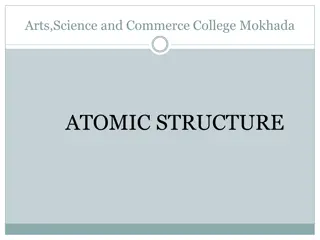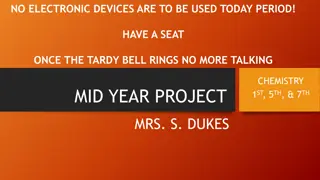Understanding Scientific Modelling in Atomic Theory
Explore the use of scientific modelling in atomic theory through a learning journey covering topics like the atom, hazards, risks, and atomic structure. Engage in a True or False task to test your knowledge and delve into a video timeline on the discovery of silver and gold elements.
Download Presentation

Please find below an Image/Link to download the presentation.
The content on the website is provided AS IS for your information and personal use only. It may not be sold, licensed, or shared on other websites without obtaining consent from the author. Download presentation by click this link. If you encounter any issues during the download, it is possible that the publisher has removed the file from their server.
E N D
Presentation Transcript
https://4.bp.blogspot.com/-BZ5V1b6uE4w/WqptgzOKsbI/AAAAAAAAGTU/ZyzeRg8V4GcQmzXQau_3zA8GaZ9s8ZwOgCLcBGAs/s640/science.jpghttps://4.bp.blogspot.com/-BZ5V1b6uE4w/WqptgzOKsbI/AAAAAAAAGTU/ZyzeRg8V4GcQmzXQau_3zA8GaZ9s8ZwOgCLcBGAs/s640/science.jpg
Character Strength: Character Strength: The Atom The Atom Learning Objective: To understand the use of Scientific modelling to Learning Objective: To understand the use of Scientific modelling to explore theories explore theories Last week: State difficulties State a type of hazard that would cause breathing Last term: Define Define what is meant by an Atom Last year: State State Keywords Keywords Atom Rutherford Plum Pudding Bohr s Nuclear Model Links to your future: Links to your future: We are learning We are learning about the use of scientific modelling We have learnt We have learnt about hazards and risks We will go on to learn We will go on to learn about Atomic Structure
FAIL Task: True or False 1 The atomic number of lithium shows it has 3 protons. 9 The atomic number of lithium shows it has 7 electrons. 17 Protons have more mass than electrons. 25 Sodium has 3 electrons and so is in group 3. 2 All group 7 elements are metals. 10 Sodium is a metal. 18 Group 1 is much more reactive than group 7. 26 Group 1 elements will lose one electron when they react. 3 Electrons have a negative charge. 11 Atoms are solid like little golf balls. 19 All group 1 elements are metals. 27 The plum pudding model contains lots of neutrons. 4 Protons are bigger than neutrons. 12 Group 7 elements can exist as diatomic molecules. 20 The nuclear model always has more electrons than protons. 28 Groups 1 and 7 are the most reactive groups in the periodic table. 5 Atoms are made of subatomic particles. 13 Group 7 elements will lose one electron when they react. 21 The scattering experiment gave us evidence for the nuclear model of the atom. 29 Group 1 elements all have one atom in their outside shell. 6 Neutrons are negative. 14 The plum pudding model is an early model of the atom. 22 Group 1 elements can exist as diatomic molecules. 30 Group 1 elements can react with group 7 elements. 7 Group 0 elements all have a full outer shell. 15 The scattering experiment gave us evidence for the plum pudding model of the atom. 23 The plum pudding model contains little negative charges. 31 Group 1 elements only react with group 7 elements. 8 Group 0 elements all have 8 electrons in their outer shell. 16 The periodic table is in order of atomic number. 24 The periodic table has elements in order of the mass number. 32 Group 1 elements all have 1 electron in their outside shell.
Watch this video and create a timeline showing: https://www.youtube.com/watch?v=7MUA_yL5GDo All: Who came up with an idea All: When they came up with it Silver and Gold: What the idea was Gold: How did they find it out?
Back in the 1890s J.J. Thomson, like other scientists, knew that atoms were neutral. He discovered that negatively charged electrons existed and he thought the atom had loads of positively charged protons to balance the same number of electrons. He thought the atom of an element resembled a plum pudding! Rutherford, Geiger and Marsden explored the atom further. Rutherford designed the experiment and Geiger and Marsden, who were his assistants, carried it out. They fired alpha particles at a thin sheet of gold leaf and watched what happened to the particles.
This is a diagram of the equipment Geiger and Marsden used to conduct their experiment. Draw and label the diagram using the following: thin gold leaf movable microscope lead detector screen alpha beam alpha particle source direction that particles went
The scientists had expected the alpha particles to pass straight through the gold leaf. Most did go straight through, but some of the alpha particles came out at different angles and some even bounced straight back. The diagram below represents some of the atoms inside the thin gold leaf. The beam of alpha particles is approaching the gold atoms. Complete the diagram by adding five arrows to show the directions that the alpha particles may have gone in. Be careful to represent the results Geiger and Marsden found.























